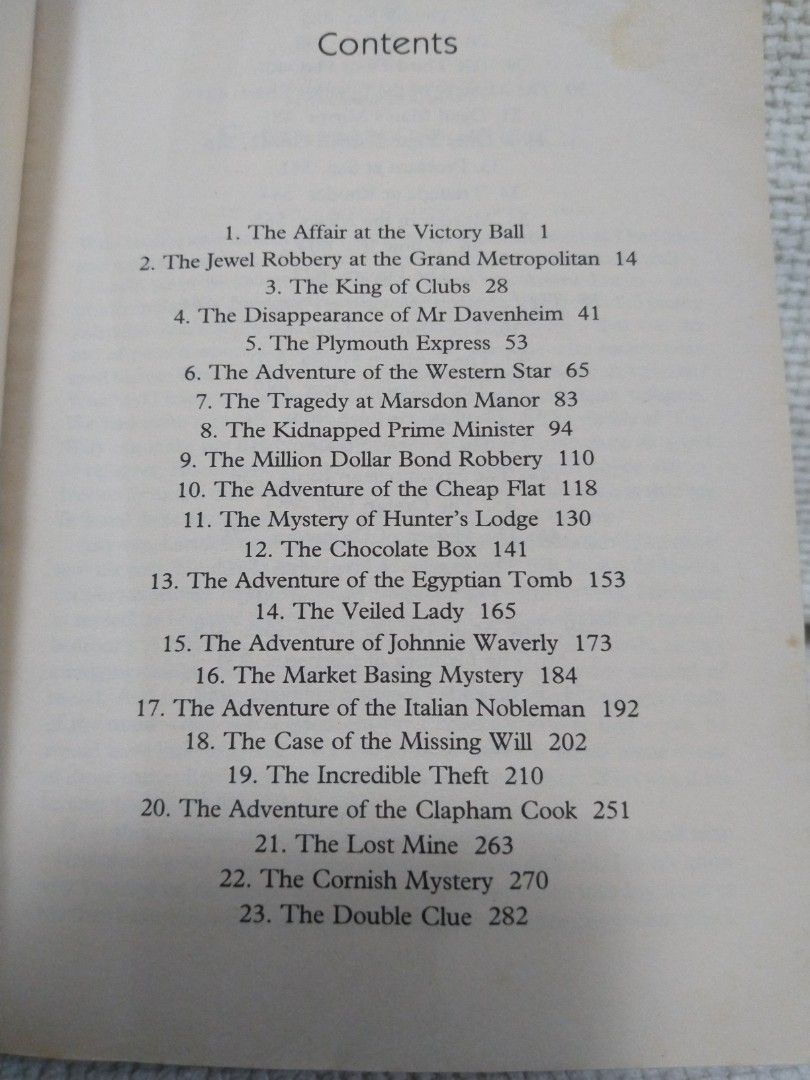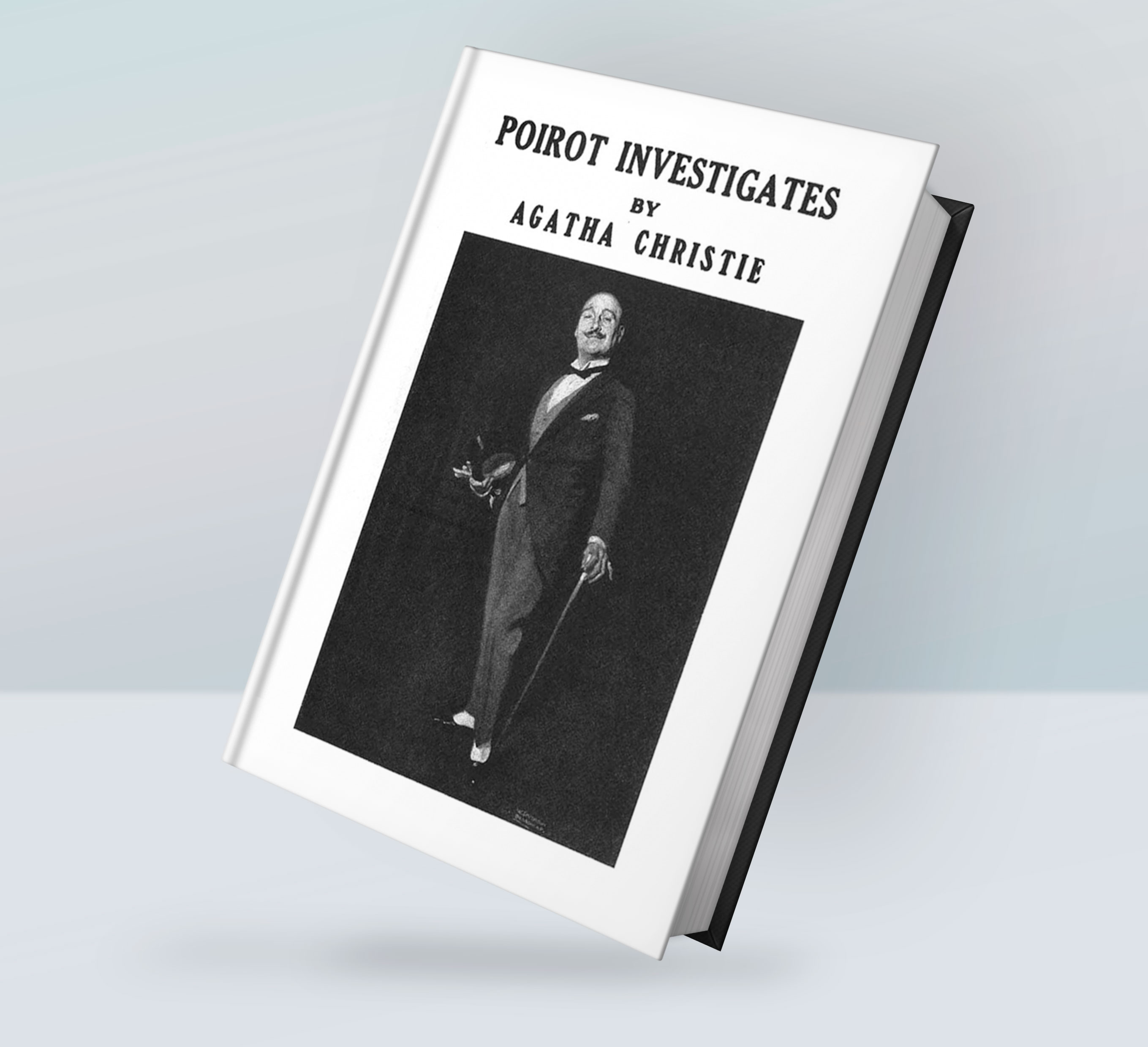Exploring The World Of Agatha Christie's Hercule Poirot

Table of Contents
The Mastermind Behind the Moustache: Hercule Poirot's Character and Personality
Poirot's Unique Traits: A Study in Eccentricity
Hercule Poirot's distinctive personality is as crucial to his success as his exceptional intellect. His meticulously groomed moustache, his unwavering self-confidence bordering on arrogance, and his obsession with order and symmetry are all defining characteristics.
- Obsession with Order: Poirot's methodical approach extends to every aspect of his life, from the arrangement of his belongings to the precise sequencing of his investigations.
- Self-Proclaimed Brilliance: His ego is considerable, often leading to pronouncements of his own brilliance and superiority. Yet, this self-assurance fuels his determination and focus.
- The "Little Grey Cells": This is Poirot's term for his extraordinary powers of deduction, highlighting his reliance on logical reasoning and careful observation.
These eccentricities, far from being weaknesses, contribute significantly to his success. His meticulous nature allows him to notice crucial details others miss, while his confidence allows him to persevere even in the most complex cases.
Poirot's Evolution Across Christie's Novels: A Character Arc
While Poirot’s core personality remains consistent throughout the series, subtle changes and developments occur as he confronts various challenges.
- Early Novels: In his early cases, Poirot's arrogance is more pronounced, showcasing a certain aloofness.
- Later Novels: As the series progresses, he shows glimpses of vulnerability and a deeper understanding of human nature. Cases like Curtain: Poirot's Last Case reveal a more contemplative and even melancholic side.
- Relationships: His interactions with Captain Hastings, his loyal companion, demonstrate a gradual softening of his initially rigid personality.
The evolution of Poirot, however subtle, adds depth and complexity to this iconic character, making him even more compelling.
The Mysteries and Settings: Iconic Cases and Locations in Poirot's World
Famous Poirot Cases: A Gallery of Intrigue
Poirot's cases are legendary for their intricate plots and shocking twists. Some of his most famous include:
- Murder on the Orient Express: A snowbound train, a wealthy victim, and a carriage full of suspicious passengers. [Link to Orient Express adaptation]
- Death on the Nile: A luxurious cruise down the Nile, jealousy, betrayal, and a shocking murder. [Link to Nile adaptation]
- And Then There Were None: Ten strangers are lured to a secluded island and systematically eliminated. [Link to And Then There Were None adaptation]
These stories, and many others, showcase Poirot's investigative brilliance and Christie's mastery of suspense.
Exploring the Settings: From Grand Estates to Exotic Locales
The settings of Poirot's investigations are as diverse and captivating as the mysteries themselves.
- Grand Estates: Many cases take place in opulent country houses, providing a backdrop of wealth, secrets, and hidden passages.
- Exotic Locations: Christie often transports Poirot to exciting locations like Egypt, the Orient, and even the fictional island in And Then There Were None, adding an extra layer of intrigue to the narratives.
The choice of setting is never arbitrary; it often contributes to the atmosphere of mystery and enhances the overall suspense. The isolation of a snowbound train, for instance, heightens the tension in Murder on the Orient Express.
Adaptations and Legacy: Poirot on Screen and in Popular Culture
Notable Screen Adaptations: Poirot on Film and Television
Poirot's enduring popularity has led to numerous film and television adaptations. Some notable portrayals include:
- David Suchet: Widely considered the definitive Poirot, Suchet's performance in the ITV series is iconic.
- Albert Finney: His portrayal captured a different facet of Poirot, showcasing a more nuanced and human side.
These adaptations, while varying in style, have all contributed to keeping Poirot's legend alive.
Poirot's Enduring Appeal: A Timeless Detective
The enduring appeal of Agatha Christie's Hercule Poirot lies in a combination of factors:
- Classic Mysteries: The genre itself remains eternally popular, offering a satisfying blend of suspense, intellect, and moral justice.
- Complex Plots: Christie's intricate plots, filled with twists, turns, and red herrings, continue to challenge and engage readers and viewers.
- Enduring Charm: Poirot's unique personality and unwavering confidence are irresistible, making him a character that audiences continue to connect with and admire.
Writing Style and Techniques: Agatha Christie's Masterful Storytelling
Christie's Narrative Style: Suspense, Misdirection, and Red Herrings
Agatha Christie's writing style is characterized by:
- Suspense: She masterfully builds suspense, carefully revealing information to keep readers guessing until the very end.
- Misdirection: Christie expertly plants red herrings, leading the reader down false trails before ultimately revealing the truth.
- Clever Pacing: The pacing of the narrative is crucial, building tension gradually and releasing it with carefully timed reveals.
These elements contribute to the immersive and engaging nature of her stories.
The Role of Clues and Red Herrings: A Deceptive Game
Christie's genius lies in her ability to subtly embed clues throughout the narrative while simultaneously using misdirection to create a sense of mystery.
- Hidden Clues: Careful readers often find subtle details and clues that Poirot uses to solve the mysteries.
- Misleading Information: Christie's use of misleading information is a crucial element in her plots, keeping readers guessing and creating a genuine sense of surprise.
Analyzing Christie's use of clues and red herrings is a fascinating exercise for any reader of mystery novels.
Conclusion: A Final Bow to Agatha Christie's Hercule Poirot
Agatha Christie's Hercule Poirot remains a literary and cultural icon. His meticulous nature, his unique methods of deduction, his iconic cases, and the masterful storytelling of Christie herself have secured his place in history. His enduring appeal lies in the classic mystery genre, the complexity of his cases, and the undeniable charm of the character himself. Dive into the captivating world of Agatha Christie's Hercule Poirot by picking up one of her novels today, or revisiting your favorite Poirot adaptation. Unravel the mysteries and experience the brilliance of this iconic detective for yourself!

Featured Posts
-
 Transfert De Melvyn Jaminet L Argent Et Les Declarations De Kylian Jaminet
May 20, 2025
Transfert De Melvyn Jaminet L Argent Et Les Declarations De Kylian Jaminet
May 20, 2025 -
 La Famille Schumacher Accueille Une Petite Fille Le Grand Pere Est Heureux
May 20, 2025
La Famille Schumacher Accueille Une Petite Fille Le Grand Pere Est Heureux
May 20, 2025 -
 The Curious Case Of Missing Murder In Agatha Christies Towards Zero Episode 1
May 20, 2025
The Curious Case Of Missing Murder In Agatha Christies Towards Zero Episode 1
May 20, 2025 -
 Ivoire Tech Forum 2025 Accelerer La Transformation Digitale En Cote D Ivoire
May 20, 2025
Ivoire Tech Forum 2025 Accelerer La Transformation Digitale En Cote D Ivoire
May 20, 2025 -
 Delving Into The Psychology Of Agatha Christies Poirot
May 20, 2025
Delving Into The Psychology Of Agatha Christies Poirot
May 20, 2025
Latest Posts
-
 Regional Stability At Risk Chinas Call For Philippines To Remove Typhon Missiles
May 20, 2025
Regional Stability At Risk Chinas Call For Philippines To Remove Typhon Missiles
May 20, 2025 -
 Typhon Missile System Us Army Doubles Down On Pacific Defense
May 20, 2025
Typhon Missile System Us Army Doubles Down On Pacific Defense
May 20, 2025 -
 Second Typhon Missile Battery Us Army Expands Pacific Presence
May 20, 2025
Second Typhon Missile Battery Us Army Expands Pacific Presence
May 20, 2025 -
 Chinas Demand Philippines Withdraw Typhon Missiles To Maintain Peace
May 20, 2025
Chinas Demand Philippines Withdraw Typhon Missiles To Maintain Peace
May 20, 2025 -
 China Urges Philippines To Remove Typhon Missile System For Regional Stability
May 20, 2025
China Urges Philippines To Remove Typhon Missile System For Regional Stability
May 20, 2025
